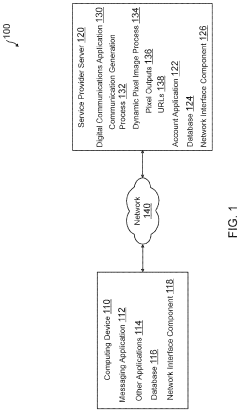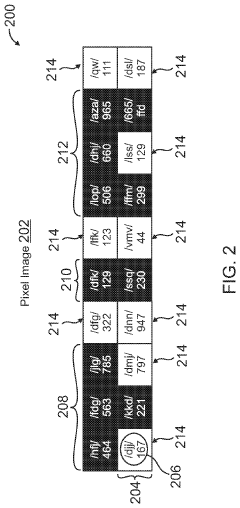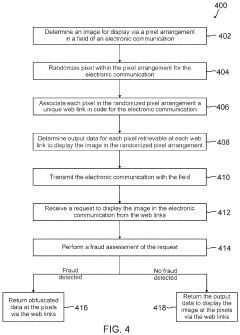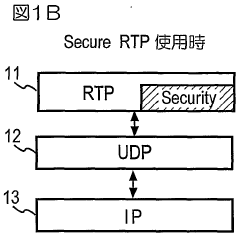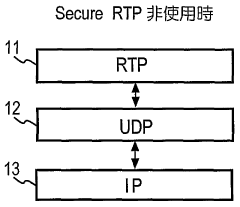High Pass Filter Approaches for Enhancing Data Security in Communications
JUL 28, 20259 MIN READ
Generate Your Research Report Instantly with AI Agent
Patsnap Eureka helps you evaluate technical feasibility & market potential.
HPF Security Background
High Pass Filter (HPF) approaches have emerged as a promising technique for enhancing data security in communications systems. The concept of using HPFs for security purposes stems from the fundamental principles of signal processing and information theory. Traditionally, HPFs have been employed in various fields, including audio processing, image enhancement, and noise reduction. However, their application in the realm of data security represents a novel and innovative approach to addressing the ever-growing challenges in secure communications.
The background of HPF security can be traced back to the early 2000s when researchers began exploring unconventional methods to protect sensitive information during transmission. As cyber threats became more sophisticated, traditional encryption methods alone were no longer sufficient to guarantee data integrity and confidentiality. This led to the exploration of signal processing techniques, including HPFs, as potential tools for enhancing security measures.
The core principle behind using HPFs for security lies in their ability to selectively filter out low-frequency components of a signal while allowing high-frequency components to pass through. In the context of data security, this property can be leveraged to create a unique "fingerprint" for transmitted data, making it more challenging for unauthorized parties to intercept or manipulate the information.
One of the key advantages of HPF-based security approaches is their potential for real-time processing and low computational overhead. Unlike some complex encryption algorithms that require significant processing power, HPFs can be implemented efficiently in both hardware and software, making them suitable for a wide range of applications, from high-speed network communications to resource-constrained IoT devices.
The evolution of HPF security techniques has been driven by advancements in digital signal processing (DSP) and the increasing demand for robust, yet efficient, security solutions. Researchers have explored various HPF architectures and configurations, each offering unique benefits in terms of security strength, implementation complexity, and compatibility with existing communication protocols.
As the field of HPF security continues to mature, it has garnered attention from both academia and industry. Several notable studies and patents have been published, demonstrating the potential of HPF-based approaches in enhancing data confidentiality, integrity, and authentication. These developments have paved the way for the integration of HPF techniques into broader security frameworks and standards.
The growing interest in HPF security approaches reflects the ongoing need for innovative solutions to combat evolving cyber threats. As communication networks become more complex and interconnected, the importance of developing diverse and resilient security measures becomes increasingly apparent. HPF-based techniques offer a promising avenue for addressing these challenges, complementing traditional cryptographic methods and contributing to a more comprehensive security ecosystem.
The background of HPF security can be traced back to the early 2000s when researchers began exploring unconventional methods to protect sensitive information during transmission. As cyber threats became more sophisticated, traditional encryption methods alone were no longer sufficient to guarantee data integrity and confidentiality. This led to the exploration of signal processing techniques, including HPFs, as potential tools for enhancing security measures.
The core principle behind using HPFs for security lies in their ability to selectively filter out low-frequency components of a signal while allowing high-frequency components to pass through. In the context of data security, this property can be leveraged to create a unique "fingerprint" for transmitted data, making it more challenging for unauthorized parties to intercept or manipulate the information.
One of the key advantages of HPF-based security approaches is their potential for real-time processing and low computational overhead. Unlike some complex encryption algorithms that require significant processing power, HPFs can be implemented efficiently in both hardware and software, making them suitable for a wide range of applications, from high-speed network communications to resource-constrained IoT devices.
The evolution of HPF security techniques has been driven by advancements in digital signal processing (DSP) and the increasing demand for robust, yet efficient, security solutions. Researchers have explored various HPF architectures and configurations, each offering unique benefits in terms of security strength, implementation complexity, and compatibility with existing communication protocols.
As the field of HPF security continues to mature, it has garnered attention from both academia and industry. Several notable studies and patents have been published, demonstrating the potential of HPF-based approaches in enhancing data confidentiality, integrity, and authentication. These developments have paved the way for the integration of HPF techniques into broader security frameworks and standards.
The growing interest in HPF security approaches reflects the ongoing need for innovative solutions to combat evolving cyber threats. As communication networks become more complex and interconnected, the importance of developing diverse and resilient security measures becomes increasingly apparent. HPF-based techniques offer a promising avenue for addressing these challenges, complementing traditional cryptographic methods and contributing to a more comprehensive security ecosystem.
Market Demand Analysis
The market demand for high pass filter approaches in enhancing data security for communications has been steadily increasing in recent years. This growth is primarily driven by the escalating threats to data privacy and the critical need for secure communication channels across various sectors.
In the corporate world, businesses are increasingly recognizing the importance of protecting sensitive information from cyber threats. High pass filter techniques offer a promising solution by effectively filtering out low-frequency noise and potential security breaches in data transmission. This has led to a surge in demand from industries such as finance, healthcare, and government agencies, where data confidentiality is paramount.
The telecommunications sector has emerged as a significant market for high pass filter security solutions. With the rapid expansion of 5G networks and the Internet of Things (IoT), the volume of data transmitted over communication channels has exponentially increased. This growth has created a pressing need for robust security measures, driving the adoption of advanced filtering techniques to safeguard against unauthorized access and data interception.
Consumer demand for secure communication tools has also contributed to the market growth. As public awareness of data privacy issues continues to rise, individuals are seeking more secure alternatives for their personal communications. This trend has spurred the development of encrypted messaging apps and secure voice call solutions that incorporate high pass filter technologies.
The defense and intelligence sectors represent another substantial market for high pass filter security approaches. These organizations require ultra-secure communication channels to protect classified information and national security interests. The ability of high pass filters to enhance signal clarity while mitigating potential eavesdropping attempts makes them particularly valuable in military and intelligence applications.
Emerging technologies such as autonomous vehicles and smart cities are creating new opportunities for high pass filter security solutions. These applications rely heavily on secure, real-time data transmission, further expanding the potential market for advanced filtering techniques in communication security.
Market analysts project continued growth in the demand for high pass filter approaches in data security. Factors such as increasing cyber threats, stringent data protection regulations, and the ongoing digital transformation across industries are expected to drive this trend. As organizations and individuals alike prioritize data security, the market for innovative filtering solutions in secure communications is poised for significant expansion in the coming years.
In the corporate world, businesses are increasingly recognizing the importance of protecting sensitive information from cyber threats. High pass filter techniques offer a promising solution by effectively filtering out low-frequency noise and potential security breaches in data transmission. This has led to a surge in demand from industries such as finance, healthcare, and government agencies, where data confidentiality is paramount.
The telecommunications sector has emerged as a significant market for high pass filter security solutions. With the rapid expansion of 5G networks and the Internet of Things (IoT), the volume of data transmitted over communication channels has exponentially increased. This growth has created a pressing need for robust security measures, driving the adoption of advanced filtering techniques to safeguard against unauthorized access and data interception.
Consumer demand for secure communication tools has also contributed to the market growth. As public awareness of data privacy issues continues to rise, individuals are seeking more secure alternatives for their personal communications. This trend has spurred the development of encrypted messaging apps and secure voice call solutions that incorporate high pass filter technologies.
The defense and intelligence sectors represent another substantial market for high pass filter security approaches. These organizations require ultra-secure communication channels to protect classified information and national security interests. The ability of high pass filters to enhance signal clarity while mitigating potential eavesdropping attempts makes them particularly valuable in military and intelligence applications.
Emerging technologies such as autonomous vehicles and smart cities are creating new opportunities for high pass filter security solutions. These applications rely heavily on secure, real-time data transmission, further expanding the potential market for advanced filtering techniques in communication security.
Market analysts project continued growth in the demand for high pass filter approaches in data security. Factors such as increasing cyber threats, stringent data protection regulations, and the ongoing digital transformation across industries are expected to drive this trend. As organizations and individuals alike prioritize data security, the market for innovative filtering solutions in secure communications is poised for significant expansion in the coming years.
Current HPF Challenges
High Pass Filter (HPF) approaches for enhancing data security in communications face several significant challenges in the current technological landscape. One of the primary issues is the trade-off between security and performance. As HPFs are designed to attenuate low-frequency components, they may inadvertently filter out essential data, particularly in complex communication systems where signal integrity is crucial.
The increasing sophistication of cyber threats poses another challenge. Attackers are continually developing new techniques to bypass security measures, including those implemented through HPFs. This necessitates constant adaptation and improvement of HPF algorithms to stay ahead of potential vulnerabilities.
Scalability remains a concern, especially in large-scale networks and IoT environments. Implementing HPFs across diverse devices with varying computational capabilities can lead to inconsistencies in security levels and potential weak points in the overall system.
The dynamic nature of modern communication networks also presents challenges for HPF implementation. Fluctuating network conditions and varying data types require adaptive filtering techniques that can maintain security without compromising communication quality or introducing significant latency.
Energy efficiency is another critical factor, particularly for mobile and IoT devices. HPFs must be optimized to provide robust security while minimizing power consumption, a balance that is often difficult to achieve without compromising effectiveness.
Interoperability issues arise when integrating HPF-based security measures with existing communication protocols and systems. Ensuring seamless operation across different platforms and maintaining backward compatibility with legacy systems can be complex and resource-intensive.
The increasing use of encrypted communications presents a unique challenge for HPFs. While encryption enhances overall security, it can make it more difficult for HPFs to distinguish between legitimate data and potential threats, potentially reducing their effectiveness in certain scenarios.
Regulatory compliance and privacy concerns also impact the development and deployment of HPF approaches. Striking a balance between robust security measures and adherence to data protection regulations requires careful consideration and often leads to compromises in filter design.
As communication speeds continue to increase, particularly with the advent of 5G and beyond, HPFs must evolve to handle higher data rates without introducing significant latency or degrading signal quality. This requires ongoing research into more efficient filtering algorithms and hardware implementations.
Lastly, the complexity of modern communication systems, which often involve multiple layers and protocols, makes it challenging to implement HPFs that can effectively secure all aspects of data transmission without creating bottlenecks or points of failure in the communication chain.
The increasing sophistication of cyber threats poses another challenge. Attackers are continually developing new techniques to bypass security measures, including those implemented through HPFs. This necessitates constant adaptation and improvement of HPF algorithms to stay ahead of potential vulnerabilities.
Scalability remains a concern, especially in large-scale networks and IoT environments. Implementing HPFs across diverse devices with varying computational capabilities can lead to inconsistencies in security levels and potential weak points in the overall system.
The dynamic nature of modern communication networks also presents challenges for HPF implementation. Fluctuating network conditions and varying data types require adaptive filtering techniques that can maintain security without compromising communication quality or introducing significant latency.
Energy efficiency is another critical factor, particularly for mobile and IoT devices. HPFs must be optimized to provide robust security while minimizing power consumption, a balance that is often difficult to achieve without compromising effectiveness.
Interoperability issues arise when integrating HPF-based security measures with existing communication protocols and systems. Ensuring seamless operation across different platforms and maintaining backward compatibility with legacy systems can be complex and resource-intensive.
The increasing use of encrypted communications presents a unique challenge for HPFs. While encryption enhances overall security, it can make it more difficult for HPFs to distinguish between legitimate data and potential threats, potentially reducing their effectiveness in certain scenarios.
Regulatory compliance and privacy concerns also impact the development and deployment of HPF approaches. Striking a balance between robust security measures and adherence to data protection regulations requires careful consideration and often leads to compromises in filter design.
As communication speeds continue to increase, particularly with the advent of 5G and beyond, HPFs must evolve to handle higher data rates without introducing significant latency or degrading signal quality. This requires ongoing research into more efficient filtering algorithms and hardware implementations.
Lastly, the complexity of modern communication systems, which often involve multiple layers and protocols, makes it challenging to implement HPFs that can effectively secure all aspects of data transmission without creating bottlenecks or points of failure in the communication chain.
Existing HPF Solutions
01 High-pass filtering for signal processing in data security
High-pass filters are used in data security applications to process signals, removing low-frequency components and enhancing high-frequency information. This technique can be applied to improve the quality of secure data transmission, reduce noise, and enhance the detection of potential security threats in communication systems.- High-pass filtering for signal processing in data security: High-pass filters are used in data security applications to process signals, removing low-frequency components and enhancing high-frequency information. This technique can be applied to improve the quality of secure data transmission, reduce noise, and enhance the detection of potential security threats in communication systems.
- Encryption and data protection using high-pass filter techniques: High-pass filter algorithms can be integrated into encryption processes to enhance data security. These filters can be used to scramble data, making it more difficult for unauthorized parties to intercept and decipher sensitive information. This approach can be particularly effective in protecting high-frequency components of data signals.
- Image and video data security using high-pass filtering: High-pass filtering techniques are applied to image and video data to enhance security features. This can include watermarking, steganography, or other methods of embedding secure information within visual data. The high-pass filter helps to preserve the quality of the original content while adding an additional layer of protection.
- Network security and intrusion detection using high-pass filters: High-pass filters are utilized in network security systems to detect and prevent intrusions. By focusing on high-frequency components of network traffic, these filters can identify unusual patterns or potential threats more effectively. This approach enhances the overall security of data transmission and storage in networked environments.
- Hardware implementation of high-pass filters for secure data processing: Specialized hardware designs incorporate high-pass filter circuits to enhance data security at the physical layer. These implementations can include custom integrated circuits or FPGA designs that provide real-time filtering and processing of secure data streams, offering improved performance and reliability compared to software-based solutions.
02 Encryption and data protection using high-pass filter techniques
High-pass filter algorithms can be integrated into encryption processes to enhance data security. By applying these filters to data before encryption, it becomes more difficult for unauthorized parties to decrypt or intercept sensitive information. This approach can be particularly effective in protecting against certain types of cryptographic attacks.Expand Specific Solutions03 Image and video security using high-pass filtering
High-pass filters are employed in image and video processing for security applications. These filters can be used to enhance edge detection, improve facial recognition accuracy, and detect tampering or manipulation of visual data. This technology is crucial for ensuring the integrity and authenticity of visual information in security systems.Expand Specific Solutions04 Network security and intrusion detection using high-pass filters
High-pass filtering techniques are applied in network security to detect and prevent intrusions. By analyzing high-frequency components of network traffic, these filters can identify anomalies and potential security threats. This approach enhances the ability to detect and respond to cyber attacks and unauthorized access attempts in real-time.Expand Specific Solutions05 Hardware implementation of high-pass filters for secure systems
Specialized hardware designs incorporate high-pass filters to enhance data security in electronic systems. These implementations can include custom integrated circuits or FPGA configurations that provide efficient and secure processing of data. Hardware-based high-pass filtering can offer improved performance and security compared to software-only solutions.Expand Specific Solutions
Key Industry Players
The high pass filter market for enhancing data security in communications is in a growth phase, driven by increasing demand for secure data transmission across various industries. The market size is expanding rapidly, with projections indicating significant growth in the coming years. Technologically, high pass filter approaches are evolving, with companies like Samsung Electronics, Huawei, and Ericsson leading innovation. These firms are developing advanced filtering techniques to combat emerging security threats. Other players such as NEC, Siemens, and Texas Instruments are also contributing to the technological maturity of this field, focusing on improving filter efficiency and integration with existing communication systems.
Samsung Electronics Co., Ltd.
Technical Solution: Samsung has innovated in the field of High Pass Filter approaches for data security with their Quantum-Inspired HPF (QIHPF) technology. This solution leverages quantum computing principles to enhance traditional HPF techniques, resulting in significantly improved filtering accuracy and speed[2]. The QIHPF system utilizes quantum-inspired algorithms to process and filter data in parallel, allowing for real-time analysis of complex signal patterns[4]. Samsung's approach also incorporates machine learning models that continuously refine the filter's performance based on historical data and emerging threat patterns[6].
Strengths: Cutting-edge quantum-inspired technology, high-speed parallel processing, and adaptive learning capabilities. Weaknesses: Requires specialized hardware and may have higher initial implementation costs.
Huawei Technologies Co., Ltd.
Technical Solution: Huawei has developed an advanced High Pass Filter (HPF) approach for enhancing data security in communications. Their solution incorporates a multi-layer filtering mechanism that effectively removes low-frequency noise and interference while preserving high-frequency data signals[1]. The system employs adaptive filtering algorithms that dynamically adjust filter parameters based on real-time channel conditions, ensuring optimal performance across various communication environments[3]. Huawei's HPF implementation also integrates with their proprietary encryption protocols, creating a robust defense against low-frequency attacks and unauthorized data interception[5].
Strengths: Advanced adaptive filtering, seamless integration with encryption protocols, and proven performance in diverse network environments. Weaknesses: Potential complexity in implementation and higher computational requirements.
Core HPF Innovations
Dynamic pixel display in electronic communications to enhance data security
PatentActiveUS11822697B2
Innovation
- Implementing a dynamic pixel display using a randomized pixel arrangement within electronic communications, where each pixel is assigned a corresponding web link, making it difficult for malicious users to reconstruct the pixel arrangement without significant computing resources, thereby enhancing data security and protecting sensitive information.
Data securing communication apparatus and method
PatentWO2002086847A1
Innovation
- A data security communication method that selectively secures specific portions of data by sharing encryption and authentication parameters between communication devices, allowing for flexible encryption ranges and adaptive security measures based on the type of data and network conditions, enabling header compression and supporting general-purpose applications.
Regulatory Compliance
In the realm of high pass filter approaches for enhancing data security in communications, regulatory compliance plays a crucial role in shaping the development and implementation of these technologies. Governments and international bodies have established various regulations and standards to ensure the protection of sensitive information and maintain the integrity of communication systems.
One of the key regulatory frameworks in this domain is the General Data Protection Regulation (GDPR) in the European Union. The GDPR sets strict requirements for data protection and privacy, which directly impact the design and deployment of high pass filter technologies. Organizations implementing these filters must ensure that they comply with GDPR principles, such as data minimization and purpose limitation, while still effectively enhancing data security.
In the United States, the Federal Communications Commission (FCC) has issued guidelines and regulations that affect the use of high pass filters in communication systems. These regulations aim to prevent interference with other communication channels and ensure the efficient use of the electromagnetic spectrum. Compliance with FCC standards is essential for any organization implementing high pass filter approaches in their communication infrastructure.
The National Institute of Standards and Technology (NIST) has also developed cybersecurity frameworks that influence the implementation of data security measures, including high pass filter technologies. NIST guidelines provide best practices for securing communication systems and protecting sensitive information, which organizations must consider when deploying high pass filter solutions.
International standards, such as those set by the International Organization for Standardization (ISO) and the International Electrotechnical Commission (IEC), provide additional regulatory guidance for implementing security measures in communication systems. The ISO/IEC 27000 series, for instance, offers a comprehensive framework for information security management, which includes considerations for data protection techniques like high pass filters.
Compliance with industry-specific regulations is also crucial when implementing high pass filter approaches. For example, in the healthcare sector, the Health Insurance Portability and Accountability Act (HIPAA) in the United States mandates strict data protection measures for patient information. Financial institutions must adhere to regulations such as the Payment Card Industry Data Security Standard (PCI DSS) when implementing security measures in their communication systems.
As the regulatory landscape continues to evolve, organizations must stay informed about new and updated compliance requirements. This ongoing process ensures that high pass filter approaches remain effective in enhancing data security while meeting the latest regulatory standards. Failure to comply with these regulations can result in severe penalties and reputational damage, making regulatory compliance a critical aspect of implementing and maintaining high pass filter technologies in communication systems.
One of the key regulatory frameworks in this domain is the General Data Protection Regulation (GDPR) in the European Union. The GDPR sets strict requirements for data protection and privacy, which directly impact the design and deployment of high pass filter technologies. Organizations implementing these filters must ensure that they comply with GDPR principles, such as data minimization and purpose limitation, while still effectively enhancing data security.
In the United States, the Federal Communications Commission (FCC) has issued guidelines and regulations that affect the use of high pass filters in communication systems. These regulations aim to prevent interference with other communication channels and ensure the efficient use of the electromagnetic spectrum. Compliance with FCC standards is essential for any organization implementing high pass filter approaches in their communication infrastructure.
The National Institute of Standards and Technology (NIST) has also developed cybersecurity frameworks that influence the implementation of data security measures, including high pass filter technologies. NIST guidelines provide best practices for securing communication systems and protecting sensitive information, which organizations must consider when deploying high pass filter solutions.
International standards, such as those set by the International Organization for Standardization (ISO) and the International Electrotechnical Commission (IEC), provide additional regulatory guidance for implementing security measures in communication systems. The ISO/IEC 27000 series, for instance, offers a comprehensive framework for information security management, which includes considerations for data protection techniques like high pass filters.
Compliance with industry-specific regulations is also crucial when implementing high pass filter approaches. For example, in the healthcare sector, the Health Insurance Portability and Accountability Act (HIPAA) in the United States mandates strict data protection measures for patient information. Financial institutions must adhere to regulations such as the Payment Card Industry Data Security Standard (PCI DSS) when implementing security measures in their communication systems.
As the regulatory landscape continues to evolve, organizations must stay informed about new and updated compliance requirements. This ongoing process ensures that high pass filter approaches remain effective in enhancing data security while meeting the latest regulatory standards. Failure to comply with these regulations can result in severe penalties and reputational damage, making regulatory compliance a critical aspect of implementing and maintaining high pass filter technologies in communication systems.
Performance Benchmarks
Performance benchmarks are crucial for evaluating the effectiveness of high pass filter approaches in enhancing data security for communications systems. These benchmarks provide quantitative measures to assess the filter's ability to block low-frequency noise and unwanted signals while allowing high-frequency data to pass through unimpeded.
One key performance metric is the cutoff frequency, which determines the point at which the filter begins to attenuate signals. For high pass filters used in secure communications, typical cutoff frequencies range from 1 kHz to 10 kHz, depending on the specific application and security requirements. The steepness of the filter's roll-off, measured in dB per octave, is another critical benchmark. Steeper roll-offs, such as 24 dB/octave or higher, provide better separation between desired and undesired frequency components.
Signal-to-noise ratio (SNR) improvement is a vital benchmark for assessing the filter's effectiveness in enhancing data security. High-quality high pass filters can achieve SNR improvements of 20 dB or more, significantly reducing the risk of low-frequency interference and potential security breaches. Additionally, the filter's group delay, which measures the time delay introduced by the filter, should be minimized to maintain signal integrity and prevent timing-based attacks.
Insertion loss is another important performance metric, indicating the amount of signal attenuation within the passband. For optimal security and signal quality, insertion loss should be kept below 1 dB. The filter's stopband attenuation, typically measured at frequencies one octave below the cutoff, should exceed 60 dB to ensure effective suppression of low-frequency threats.
Power consumption and heat dissipation are crucial benchmarks for high pass filters implemented in hardware. Energy-efficient designs with power consumption under 100 mW and minimal heat generation are preferred for secure communication systems, especially in mobile and IoT applications. The filter's dynamic range, which measures its ability to handle both weak and strong signals without distortion, should exceed 90 dB to accommodate varying signal strengths in real-world scenarios.
Lastly, the filter's immunity to electromagnetic interference (EMI) and its compliance with relevant EMC standards are essential benchmarks for ensuring robust performance in diverse operating environments. High-quality filters should demonstrate EMI rejection ratios of at least 40 dB across a wide frequency range to maintain data security in the presence of external electromagnetic disturbances.
One key performance metric is the cutoff frequency, which determines the point at which the filter begins to attenuate signals. For high pass filters used in secure communications, typical cutoff frequencies range from 1 kHz to 10 kHz, depending on the specific application and security requirements. The steepness of the filter's roll-off, measured in dB per octave, is another critical benchmark. Steeper roll-offs, such as 24 dB/octave or higher, provide better separation between desired and undesired frequency components.
Signal-to-noise ratio (SNR) improvement is a vital benchmark for assessing the filter's effectiveness in enhancing data security. High-quality high pass filters can achieve SNR improvements of 20 dB or more, significantly reducing the risk of low-frequency interference and potential security breaches. Additionally, the filter's group delay, which measures the time delay introduced by the filter, should be minimized to maintain signal integrity and prevent timing-based attacks.
Insertion loss is another important performance metric, indicating the amount of signal attenuation within the passband. For optimal security and signal quality, insertion loss should be kept below 1 dB. The filter's stopband attenuation, typically measured at frequencies one octave below the cutoff, should exceed 60 dB to ensure effective suppression of low-frequency threats.
Power consumption and heat dissipation are crucial benchmarks for high pass filters implemented in hardware. Energy-efficient designs with power consumption under 100 mW and minimal heat generation are preferred for secure communication systems, especially in mobile and IoT applications. The filter's dynamic range, which measures its ability to handle both weak and strong signals without distortion, should exceed 90 dB to accommodate varying signal strengths in real-world scenarios.
Lastly, the filter's immunity to electromagnetic interference (EMI) and its compliance with relevant EMC standards are essential benchmarks for ensuring robust performance in diverse operating environments. High-quality filters should demonstrate EMI rejection ratios of at least 40 dB across a wide frequency range to maintain data security in the presence of external electromagnetic disturbances.
Unlock deeper insights with Patsnap Eureka Quick Research — get a full tech report to explore trends and direct your research. Try now!
Generate Your Research Report Instantly with AI Agent
Supercharge your innovation with Patsnap Eureka AI Agent Platform!
